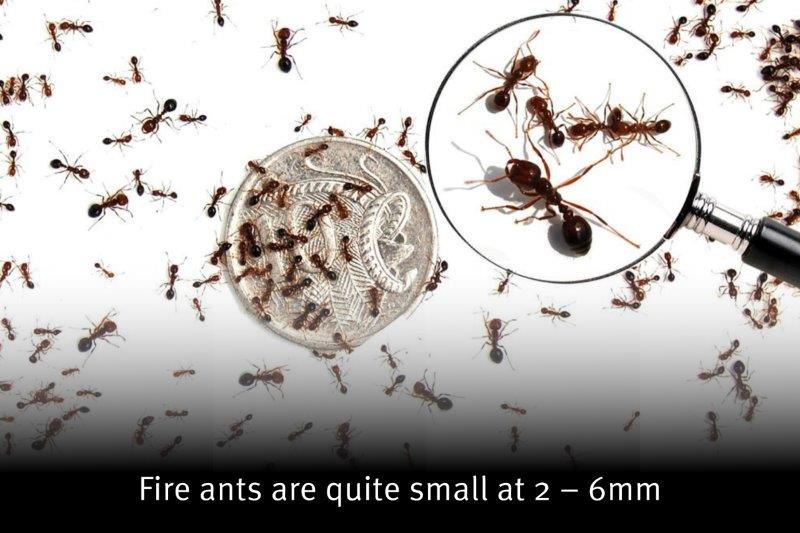BY LINESE NORRISH
A LOCAL COAST CARE VOLUNTEER KNOWLEDGEABLE ON LOCAL FLORA AND FAUNA.

FIRE ants were first detected in Brisbane in February 2001, though it seems likely they arrived on a shipping container from the USA at least 20 years prior to their discovery.
Currently, six incursions have been located in what are labelled Zones 1 and 2, spreading from the Gold Coast west to the Lockyer Valley and heading north with an outbreak in Beerwah in 2017. To date, the Sunshine Coast has been fire ant free, but we must be alert and certainly alarmed should we come upon an established colony of these tiny, but sometimes deadly, critters.
They range in sizes from 2 – 3mm with the Queen being the most easily identified with her large head and swollen abdomen. If spotted, keep your distance and Do Not Disturb as a sting can sometimes lead to a fatal allergic reaction.
The dome-shaped mounds housing an ant colony are not always identifiable to the untrained eye. They can be found in lawns, garden beds, near water sources, and they can appear in loose soil up to 40cm high and 50cm in diameter. Photograph the suspect mound and report it by phoning 13 25 23 or Google fireants.org.au within 24 hours of the sighting.
This site will provide you with valuable information on home-based eradication treatments such as Borax in boiling water, or cayenne pepper sprinkled around the nest to repel the ants. However, the most effective method to rid your world of these toxic invaders is to purchase a product named Over and Out.
A most illustrative and informative video on this website’s Facebook page will show ants in action plus a large nest being removed, accompanied by a commentary from a learned academic.
As prevention is better than cure, we need to be on guard to report any suspicious ant activity before it evolves into another environmental problem for the Sunshine Coast.
For more information on fire ants and how to reduce the risk of spreading them, visit
Fireants.org.au or call 13 25 23.
